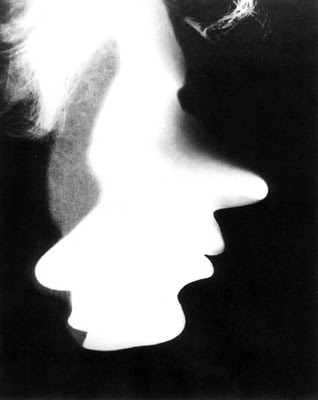WEEK 9 | SPACE + ART
There is a widely shared notion that the aspiration of exploring space is a very recent event. After the rivalry in the 1950s, people became more conscious of the existence of the outer space. However, I would hardly agree upon this argument. A fact that surprises me is how ancient artists viewed the space and how much their vision resembled modern people's vision towards space.
I found a quite exotic book in the East Asian library which is called Classic of Mountains and Seas. It is composed of many mystery stories written by ancient Chinese people including drawings. It surprised me a lot since when they mentioned "sun," the image was never one-dimensional. They imagined sun as a three dimensional space, a piece of land where gods could live, a movable ball. Ancient Chinese artists could only see the sun as a single point, however, their imagination had already gone beyond the visual presentation of the sun, which implied that the curiosity, imagination of the outer space was already in shape long before the 1950s.
We have heard too many explorations about Mars, Saturn and Jupiter. Finally, NASA declares the new plan of reaching out to the sun. NASA will send Parker Solar Probe to the sun in 2018. One amazing fact about art-science collaborative work under the context of space exploration is that the creative process has been totally given to the solar system, the space itself. The space is like a talented artist who generates endless works with random themes and variations. The finished works are "purchased" by the generous dealer, the space observatory, who eagerly publish every single piece of work. The Solar Observatory System captures the solar eruptions and represent them as using three types of wavelength. The final image is out of imagination.
The space exploration process is like meeting an old yet unfamiliar friend. It carries lots of imagination, curiosity and creation. It is fascinating to see that we have so many puzzles have yet to be solved and so many cheering moments to expect.
Sources:
"Amazing Solar Flare Eruptions Captured by NASA's Solar Dynamics Observatory." Colossal. N.p., 02 Apr. 2015. Web. 04 June 2017. <http://www.thisiscolossal.com/2014/06/solar-flares-nasa-sdo/>.
Djudjic, Dunja. "Jupiter's animated photos from Juno Spacecraft are out of this world." DIY Photography. N.p., 30 May 2017. Web. 04 June 2017. <https://www.diyphotography.net/jupiters-animated-photos-juno-spacecraft-world/>.
"New NASA probe will get closer to the sun than any spacecraft in history." Inhabitat Green Design Innovation Architecture Green Building. N.p., 01 June 2017. Web. 04 June 2017. <http://inhabitat.com/new-nasa-probe-will-get-closer-to-the-sun-than-any-spacecraft-in-history/>.
NASA. NASA, n.d. Web. 04 June 2017. <https://science.nasa.gov/heliophysics/missions/>.
"NASA's Impossible Em Drive Thruster Passes Peer Review." NASA's Impossible Em Drive Thruster Passes Peer Review | #follownews. N.p., n.d. Web. 04 June 2017. <https://www.follownews.com/nasa39s-impossible-em-drive-thruster-passes-peer-review-263sx>.
I found a quite exotic book in the East Asian library which is called Classic of Mountains and Seas. It is composed of many mystery stories written by ancient Chinese people including drawings. It surprised me a lot since when they mentioned "sun," the image was never one-dimensional. They imagined sun as a three dimensional space, a piece of land where gods could live, a movable ball. Ancient Chinese artists could only see the sun as a single point, however, their imagination had already gone beyond the visual presentation of the sun, which implied that the curiosity, imagination of the outer space was already in shape long before the 1950s.
We have heard too many explorations about Mars, Saturn and Jupiter. Finally, NASA declares the new plan of reaching out to the sun. NASA will send Parker Solar Probe to the sun in 2018. One amazing fact about art-science collaborative work under the context of space exploration is that the creative process has been totally given to the solar system, the space itself. The space is like a talented artist who generates endless works with random themes and variations. The finished works are "purchased" by the generous dealer, the space observatory, who eagerly publish every single piece of work. The Solar Observatory System captures the solar eruptions and represent them as using three types of wavelength. The final image is out of imagination.
The space exploration process is like meeting an old yet unfamiliar friend. It carries lots of imagination, curiosity and creation. It is fascinating to see that we have so many puzzles have yet to be solved and so many cheering moments to expect.
Sources:
"Amazing Solar Flare Eruptions Captured by NASA's Solar Dynamics Observatory." Colossal. N.p., 02 Apr. 2015. Web. 04 June 2017. <http://www.thisiscolossal.com/2014/06/solar-flares-nasa-sdo/>.
Djudjic, Dunja. "Jupiter's animated photos from Juno Spacecraft are out of this world." DIY Photography. N.p., 30 May 2017. Web. 04 June 2017. <https://www.diyphotography.net/jupiters-animated-photos-juno-spacecraft-world/>.
"New NASA probe will get closer to the sun than any spacecraft in history." Inhabitat Green Design Innovation Architecture Green Building. N.p., 01 June 2017. Web. 04 June 2017. <http://inhabitat.com/new-nasa-probe-will-get-closer-to-the-sun-than-any-spacecraft-in-history/>.
NASA. NASA, n.d. Web. 04 June 2017. <https://science.nasa.gov/heliophysics/missions/>.
"NASA's Impossible Em Drive Thruster Passes Peer Review." NASA's Impossible Em Drive Thruster Passes Peer Review | #follownews. N.p., n.d. Web. 04 June 2017. <https://www.follownews.com/nasa39s-impossible-em-drive-thruster-passes-peer-review-263sx>.





Comments
Post a Comment